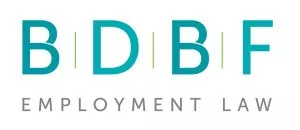In July 2021, the Financial Conduct Authority ("FCA"), Prudential Regulation Authority ("PRA") and the Bank of England (together the "Regulators") published a collective discussion paper titled "Diversity and inclusion in the financial sector - working together to drive change" (the "Discussion Paper"). Through the Discussion Paper, the Regulators aim to accelerate the pace of meaningful change and open the discussion on diversity and inclusion in the financial services sector.
In the first of two articles on the topic, Melvyna Mumunie explains the aims of the Discussion Paper and outlines the policy proposals under consideration.
Purpose of the Discussion Paper
The Discussion Paper recognises the importance of promoting diversity and inclusion given the disproportionate impact that the coronavirus pandemic has had on certain groups. In addition, there is growing evidence of positive outcomes for businesses which are more diverse and inclusive, including: reducing groupthink, encouraging debate and innovation and improving outcomes for consumers and financial stability across markets. Academic research also suggests that a more balanced board improves performance on corporate and governance metrics, such as managerial decision making and risk management.
There are already numerous initiatives in place to improve and increase diversity. These includes the Women in Finance Charter (a commitment by HM Treasury and signatory firms to work together to build a more gender-balanced financial sector), the Social Mobility Employer Index and the Business Disability Forum. However, while trends are promising for gender inclusivity in leadership, figures remain low across the "diversity board". Fewer than one in 10 management roles in financial services are held by black, Asian or other ethnic minority people. In respect of social mobility, a study of eight financial firms found that 89% of senior roles are held by people from higher socio-economic backgrounds. Evidence shows that the financial services sector has a long way to go, and this is made more challenging by poor collection of data on many aspects of diversity within the sector.
The Discussion Paper is an effort by the Regulators to engage financial firms and other stakeholders in a discussion on how the Regulators can accelerate the pace of meaningful change in the financial sector. It sets out the Regulators' thinking on potential policy choices and clarifies their approach to diversity and inclusion in pursuit of their statutory objectives and duties. Responses are invited from all parts of the financial sector and parties with an interest in the issues.
The current position
The Regulators highlight that an impasse has been reached with regard to the implementation of diversity and inclusion strategies by financial services firms. This has led to:
- the continued existence of large gender and ethnicity pay gaps;
- parts of the industry lacking diversity at senior levels;
- products being offered to customers that do not always meet the needs of disadvantaged groups; and
- employees within firms and regulators lacking the vocabulary or skills to conduct open and constructive conversations about sensitive subjects.
Through the Discussion Paper and consultation, the Regulators seek to widen the general discussion on diversity and inclusion (which they acknowledge in most part has focused on gender) and bring less prevalent aspects of diversity to the table.
The Regulators also recognise that the interconnected nature of social categorisations such as race, class or gender as they apply to a given individual or group can create overlapping and interdependent systems of discrimination or disadvantage - this is often referred to as intersectionality and should be accounted for in the discussion.
Diversity of thought
The Regulators' focus is on "diversity of thought" which they state can be influenced by a number of factors including: different perspectives, abilities, knowledge, attitudes, information styles, demographic characteristics or any combination of these. This can be measured by reference to visible characteristics such as gender, age and ethnicity and those which are non-visible, such as sexual orientation and disability.
The Regulators propose defining diversity of thought in the following way "Bringing together a range of different styles of thinking among members of a group. Factors that could lead to diverse thinking could include, but are not limited to, different perspectives, abilities, knowledge, attitudes, information styles and demographic characteristics or any combination of this".
Interestingly, the Regulators do not limit these characteristics to those protected under the Equality Act 2010 (namely age, disability, gender reassignment, marriage and civil partnership, pregnancy and maternity, race, religion or belief, sex and sexual orientation). Also included are factors such as socio-economic diversity and gender, including where they do not coincide with sex and cultural background.
The meaning of "inclusion"
The Regulators acknowledge that diversity in and of itself is not enough and that an inclusive culture is necessary to reap the benefits of diversity of thought. For the Regulators, inclusion means that everyone feels involved, valued, respected, treated fairly and that these elements are embedded into a firm's culture. An inclusive firm is a firm in which all individuals are able to participate fully, speak freely without fear and where there is equal access to opportunities and resources for those who might otherwise be excluded or marginalised.
The proposed policy options
Whilst the Regulators already have diversity requirements in place for some regulated firms, most requirements are sector specific and result in a fragmented approach to diversity and inclusion. For example, Senior Managers in FCA-regulated firms are expected to take responsibility for developing and embedding healthy cultures in their areas of responsibility. In respect of reporting and disclosures, firms which are subject to the Corporate Governance Code are currently expected to publish some diversity information.
In seeking to embed a more consistent approach across the board, the Regulators wish to take a proportionate approach, and do not intend to be prescriptive or implement a one size fits all approach. However, the following are the policy options under consideration to drive diversity and inclusion within firms:
- tone from the top through board and senior leadership accountability policies and processes for driving diversity and inclusion;
- firm-wide policies and practices including publishing policies, setting diversity targets, diversity training and development of diverse talent;
- regulatory measures and powers in respect of whether adverse findings in relation to individuals' conduct with respect to diversity and inclusion issues could affect assessments for fitness and propriety; and
- regular data collection and disclosures which would include data on board and executive committee membership and senior managers, diversity of the workforce and pay gaps.
The Regulators' multifaceted approach to diversity and inclusion in the financial sector is no mean feat. In an effort to depart from the traditional understanding of diversity and inclusion and embracing diversity of thought and intersectionality (a term which only came into being in 1989), the Discussion Paper is as much informative guidance on diversity and inclusion as it is a call to action. It is also an indication of the potentially wide-ranging changes faced by financial services firms. Comments on the Discussion Paper are due by 30 September 2021 with a consultation expected to launch in the early part of 2022. Firms likely to be affected by these changes are encouraged to consider the detail of the Discussion Paper and provide feedback.
With these changes will likely come several challenges. Not least regarding proportionality and guidance on what will amount to non-financial misconduct should the Regulators use their regulatory powers to assess non-financial misconduct and fitness and propriety with reference to diversity and inclusion. We will address these considerations in our next article on the Discussion Paper.
The Discussion Paper can be downloaded here - https://www.bankofengland.co.uk/prudential-regulation/publication/2021/july/diversity-and-inclusion-in-the-financial-sector
The content of this article is intended to provide a general guide to the subject matter. Specialist advice should be sought about your specific circumstances.

